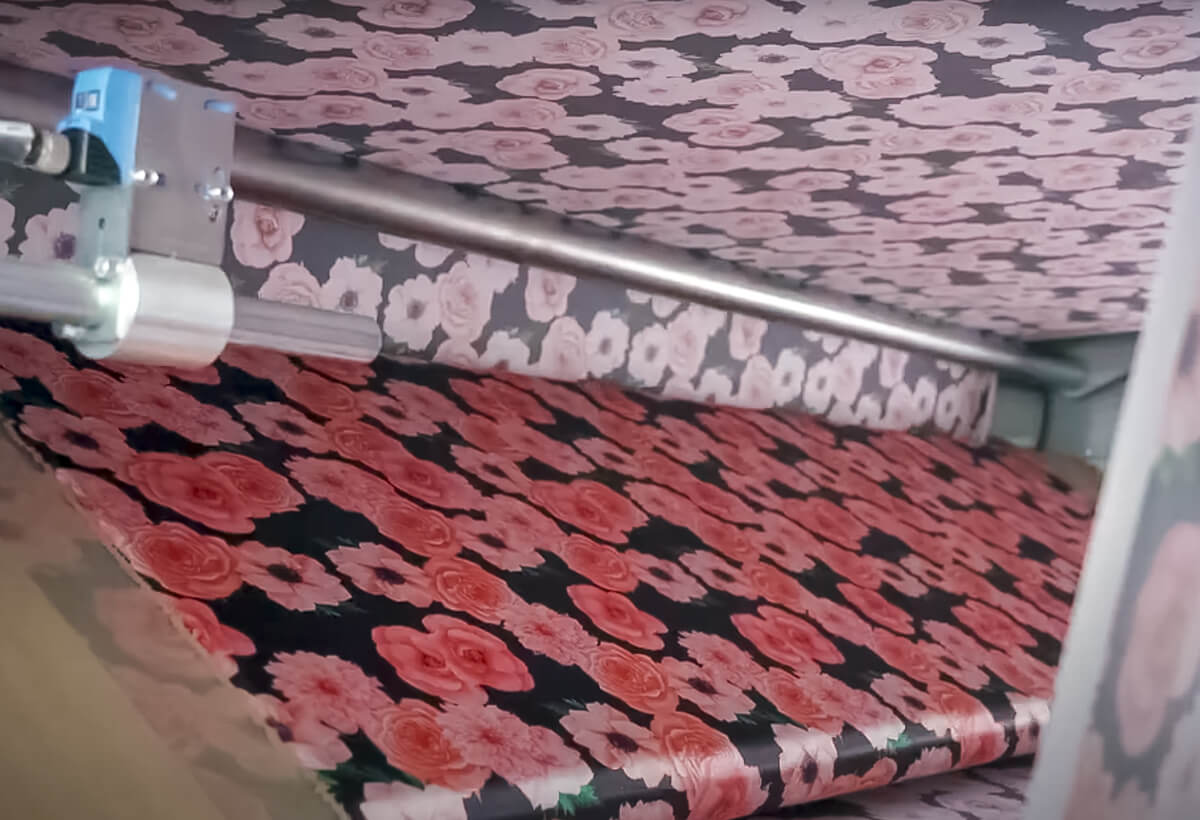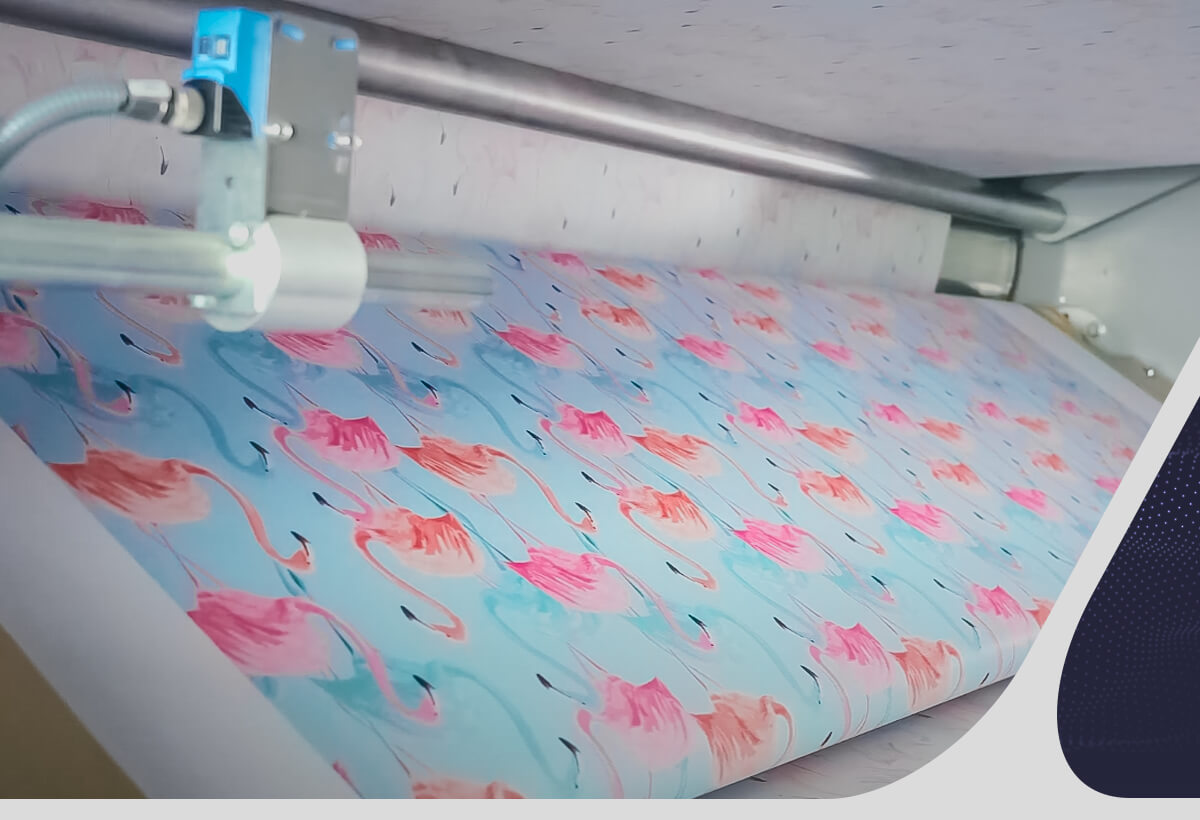Digital Silk, popular for its versatility, is starting to lose ground to digital printing, an industrial solution that combines automation, precision, and productivity in a single workflow.
After all, in today’s textile industry, speed to market and the ability to maintain consistent quality at high production volumes are decisive differentiators for competitiveness.
What used to be enough for small, customized runs is now giving way to faster, scalable, and technologically integrated processes.
Curious to learn more? Keep reading to understand the details of these two techniques.
What is Digital Silk?
Digital Silk, also known as DTG (Direct To Garment), is a printing technique that combines traditional screen printing with digital tools. It allows direct printing onto fabric or surfaces, delivering quality at an accessible cost.
In conventional screen printing, the final result depends on manually created screens. In digital printing, technological tools accelerate preparation, enabling more flexible and faster production.
This makes it an excellent option for small, customized runs, such as t-shirts, promotional items, and giveaways.
However, because it is simpler and less automated, this technique is not ideal for large-scale industrial production, as it has limitations in productivity, consistency, and technological integration.
How Does Digital Silk Work?
In Digital Silk, digital printers apply ink directly onto the chosen fabric or material. They typically use water-based inks or special pigments that adhere well to textiles.
The process can generally be divided into several steps:
- Development of the design/print to be applied.
- Preparation of the fabric with a pre-treatment to help ink adhesion.
- Adjustment of temperature, color, and print resolution on the digital printer.
- Printing the design directly onto the fabric.
- Fixing the ink through a drying process.
Digital Silk is a versatile and affordable solution for those seeking quality and customization in small volumes. In other words, it’s a great entry point into the world of digital printing.
Key Differences Between Digital Silk and Digital Printing
Before discussing the differences, it’s important to note that digital printing is an evolution of Digital Silk. It focuses on industrial-scale printing with automation and precision.
The process becomes fully integrated with digital systems that manage everything from design to final production. Digital printing relies on modern textile machines capable of delivering high-resolution prints with vibrant colors.
Additionally, digital printing connects to industrial production management systems such as ERP and MES. This enables strict production control, resource optimization, waste reduction, and real-time monitoring of textile machinery performance.
Thus, digital printing not only supports large-volume production with continuous operation but also ensures greater efficiency and productivity for industries.
| Feature | Digital Silk | Digital Printing |
| Production Scale | Small to medium runs | Large volumes and continuous industrial production |
| Process | Direct printing with simple digital equipment | Automated industrial printing with advanced machines |
| Flexibility | Ideal for customizations and variations | Focused on efficiency for large batches |
| Production Speed | Suitable for smaller runs | Perfect for large-scale production |
| Technological Integration | Generally limited, still relies on some manual processes | Fully integrated with industrial management systems |
| Cost | More affordable for small productions | Higher investment but cost-effective for large volumes |
| Quality & Consistency | Good for small runs | High quality and repeatability in large volumes |
| Common Applications | Customized t-shirts, giveaways, and samples | Industrial fashion, large collections, continuous production |
>> Read also: Digital textile printing: continuous process and low cost
Why Are Industries Replacing Digital Silk with Digital Printing?
Digital Silk no longer meets the demands of growing production, which requires higher productivity, quality, and technological integration.
It is therefore expected that industries are replacing this technique with digital printing, as Digital Silk only works well for small to medium-scale demands.
Digital printing gives industries the flexibility needed to keep up with an increasingly dynamic market.
This means that if a new trend emerges or an urgent order comes in, the artwork can be changed, the layout adjusted in the system, and production can start almost immediately, without relying on time-consuming manual steps.
Brands can thus launch collections quickly, fulfill large orders in a short time, and respond to shifts in demand without compromising deadlines.
All of this is achieved with repeatable quality, as sensors and software control the ink application, ensuring that the first and last piece in a batch have exactly the same tone, brightness, and sharpness.
In other words, even replacement orders made months later will match the original print, maintaining brand consistency.
This shift reflects the industry’s pursuit of faster, scalable, and more profitable processes. Digital printing is therefore a strategic investment to maintain competitiveness.
How Does Delta Textile Solutions Support This Technological Transformation?

Delta Textile Solutions acts as a strategic partner for the industry by developing textile solutions that bring the most modern and efficient technologies to the reality of both national and international textile production.
One example of this approach is the Sublimation Calender, designed for large-scale operations. By incorporating automation, standardization, and connectivity with the industry’s ERP, the solution:
- Increases productivity, printing up to 6 meters per minute.
- Ensures consistent quality, with precise control of temperature and pressure.
- Reduces setup time, thanks to intelligent winding/unwinding systems.
- Provides real-time data to monitor performance and predict maintenance.
- Minimizes textile waste, with efficient use of materials and optimized processes.
By replacing multiple manual presses or outsourced processes, the Sublimation Calender transforms the workflow into a scalable, efficient, and profitable operation. In other words, it is ideal for those looking to expand production with consistency and speed.
Through this combination of technology and automation, we enable our partners’ productive evolution, helping them respond to new market demands and remain competitive in an increasingly dynamic scenario.
Want to learn more about this and other Delta solutions? Get in touch with us today!



